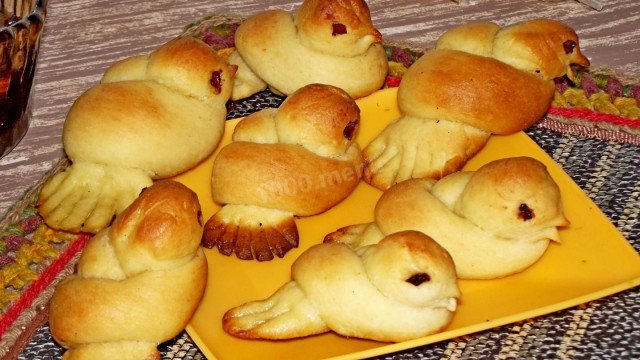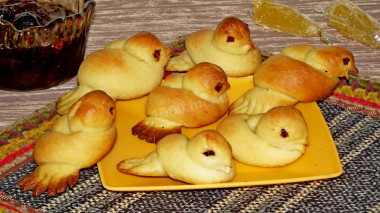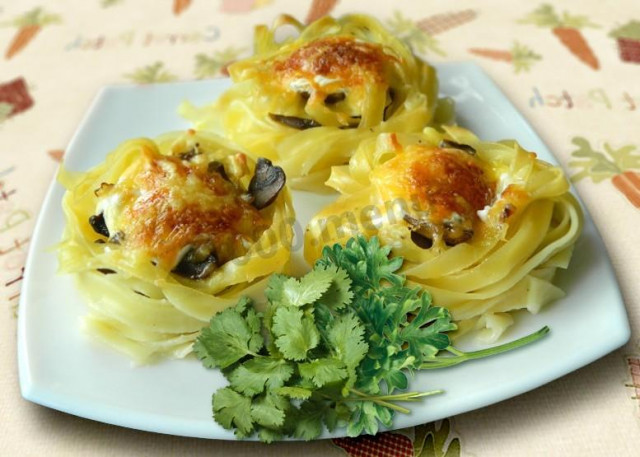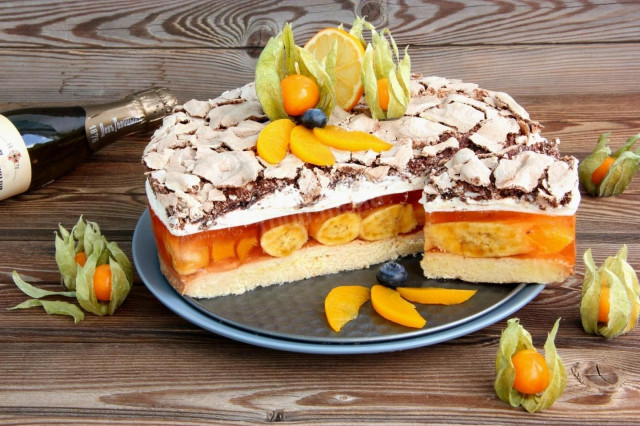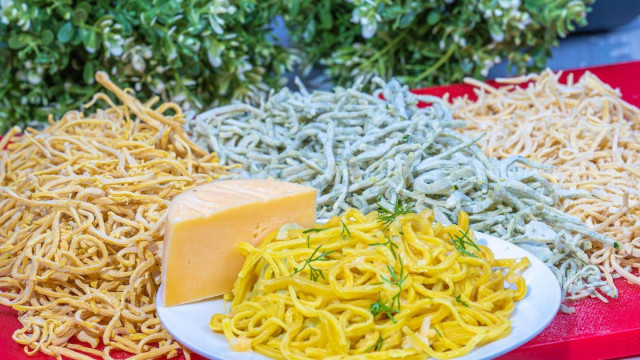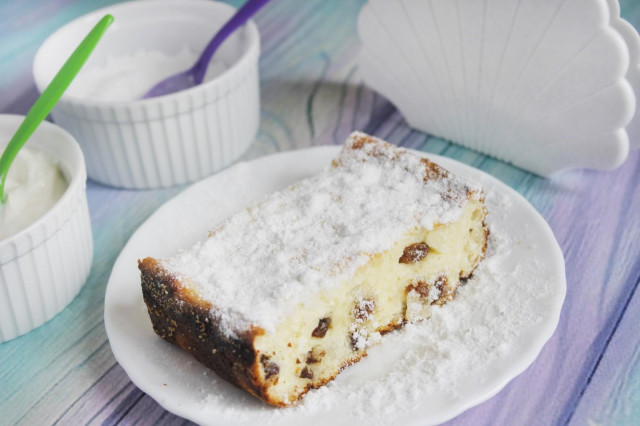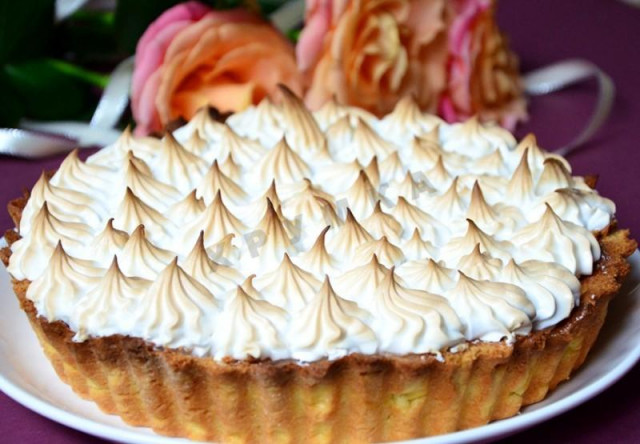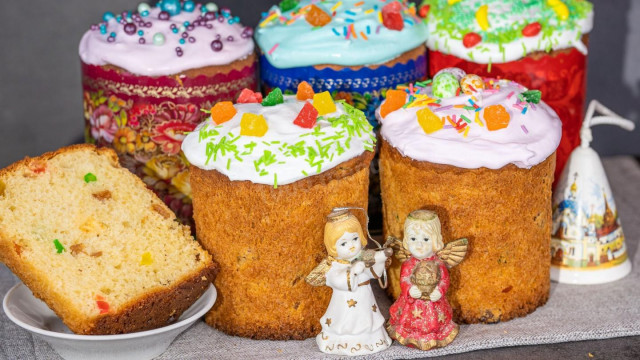Composition / ingredients
Step-by-step cooking
Step 1:
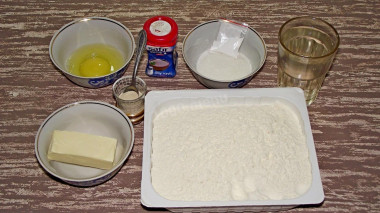
All products for larks are very affordable and inexpensive, but buns are obtained with a delicate creamy taste from butter, which you can add more if you like.
Step 2:
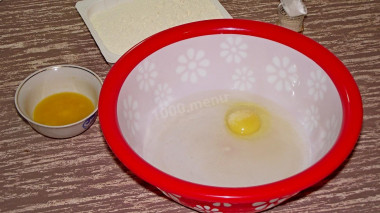
First mix the egg and warm water, add butter, sugar and salt (quite a bit).
Step 3:
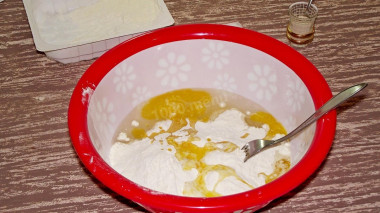
All the ingredients with half the flour should be stirred well until smooth, and only then add the rest of the flour mixed with yeast and vanilla sugar.
Step 4:
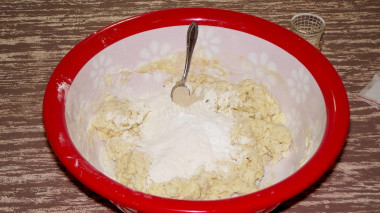
Since in this case the yeast according to the instructions should not be mixed with liquid, but with dry products, then yeast was added at the very end. You do as you need to.
Step 5:
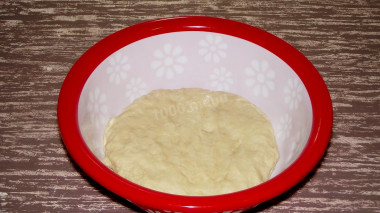
It is this proportion of flour and water that makes the dough elastic, and neither water nor flour had to be added. But then you need to knead for at least 5-7 minutes. It is tight at first, but then it becomes more elastic and pliable.
Step 6:
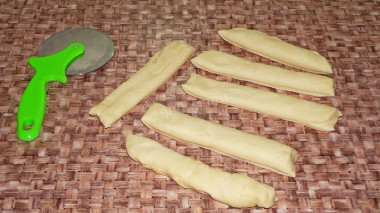
With your hands, you can distribute the dough into a layer and put it to rise, and when it rises, divide it into uniform strips.
Step 7:
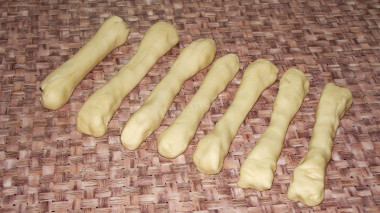
Roll up long sausages, which should remain plump at the ends, and the middle is thinner. Now you can lightly lubricate your hands with oil and turn each sausage in them and try to pull and tie a knot.
Step 8:
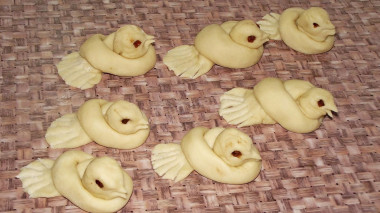
Then you need to form a muzzle with a beak - pinch the beak with scissors, and you can come up with eyes from anything, I have dried fruits, from which I cut thin bars and inserted them into the dough through, helping with a toothpick, so they won't fall off. Leave the birds for another 10-15 minutes for proofing, but be sure to moisten with water and preferably through a spray gun, otherwise it will dry out and get a cracked and not beautiful crust.
Meanwhile, you need to turn on and warm up the oven and put 500 ml of water on the very bottom in a small saucepan, so that the thin parts of the body - tails and beaks do not burn too much, and put everything to bake, I put it on the very top on medium heat. After 30 minutes, the buns are gilded and baked, but you need to watch out, there are different ovens.
It remains only to smear them with butter, while they are hot with heat, and the unique birds are ready.
In the oven, they take on a different interesting shape and somehow come to life, and you can see for yourself what happened. I made them from half of the dough, because I didn't know how it would turn out, and it wouldn't be 7, but 14-15 pieces. Perhaps you will get them prettier and neater, but I really liked these.
Now you can have a tea party, although somehow it's a pity to spoil them, let them live for now.
Baking larks in ancient times was traditionally a spring ritual. They were baked from a simple yeast dough to attract spring soon. And still these birds are not forgotten, and probably everyone will want to cook them at least once, but try to cook them, especially if baking is meant for kids. And if they are also involved in this case, then probably no one will refuse to contribute to this delicious and interesting business.
Caloric content of the products possible in the composition of the dish
- Chicken egg - 157 kcal/100g
- Egg white - 45 kcal/100g
- Egg powder - 542 kcal/100g
- Egg yolk - 352 kcal/100g
- Ostrich egg - 118 kcal/100g
- Whole durum wheat flour fortified - 333 kcal/100g
- Whole durum wheat flour universal - 364 kcal/100g
- Flour krupchatka - 348 kcal/100g
- Flour - 325 kcal/100g
- Granulated sugar - 398 kcal/100g
- Sugar - 398 kcal/100g
- Butter 82% - 734 kcal/100g
- Amateur unsalted butter - 709 kcal/100g
- Unsalted peasant butter - 661 kcal/100g
- Peasant salted butter - 652 kcal/100g
- Melted butter - 869 kcal/100g
- Salt - 0 kcal/100g
- Water - 0 kcal/100g
- Vanillin - 288 kcal/100g
- Dry yeast - 410 kcal/100g

